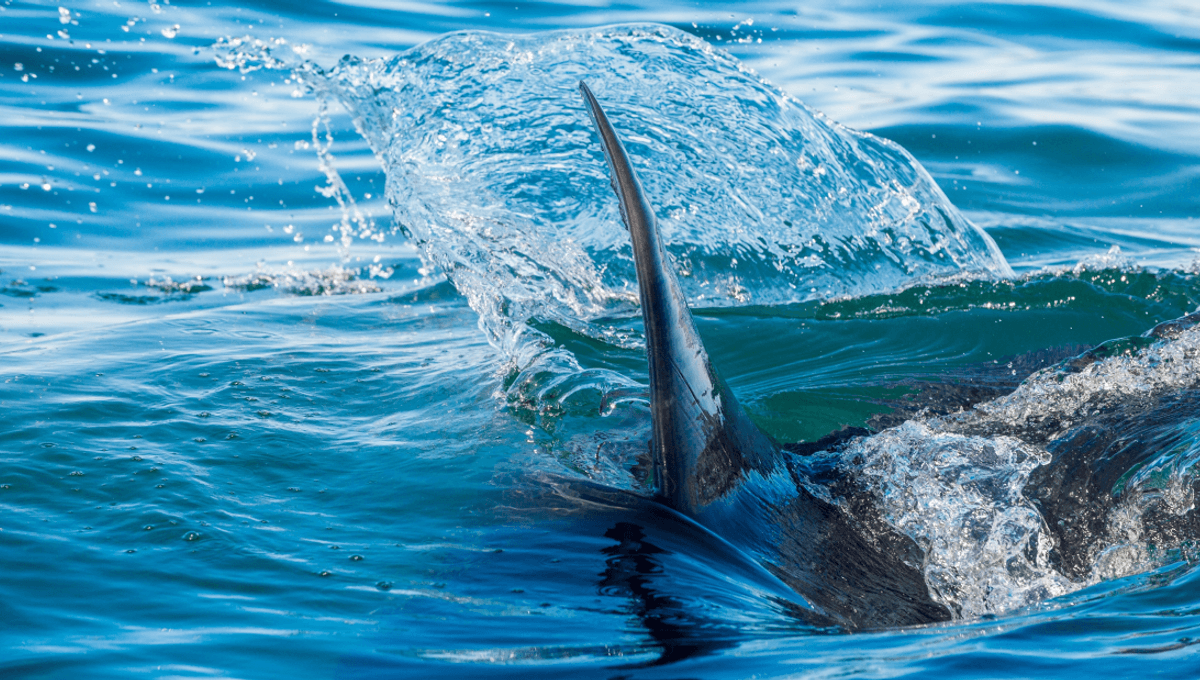
Megalodon was slightly faster than a great white according to a new study that looked at sharks’ denticles as an indicator of their hunting speed. Despite the significant difference between the enormous estimated size of megalodon and its comparatively smaller extant relative, both were estimated to hunt at a pace comparable to that of an average human jogger – so you’d have quite the upper hand if they tried pursuing you on land.
You may have heard the old adage that dolphins are smooth like olives while a shark is a bit like velvet, smooth one way and coarse the other. This is a reference to their bizarre skin that’s covered in dermal denticles: V-shaped structures that are more comparable to teeth than scales.
Swimming around with modified teeth for skin is thought to decrease drag and turbulence for sharks, meaning they can glide through the water faster and without creating as much noise. Given that different species exhibit different denticles, that got scientists wondering if the denticles themselves could be an indicator of hunting speed in sharks. And if you’re going to study shark hunting speeds from their tooth skin, why stop at the ones still alive today?
The researchers looked at previous studies that have estimated the size and spacing of Otodus megalodon denticles, which found them to be similar to that of the extant great white shark, Carcharodon carcharias. They were then able to take this data, and denticle data from several modern shark species, to estimate speed by focusing on ridge spacing and the drag reduction efficiency of each species’ denticle structure, as well as the sharks’ body lengths.
The results showed that megalodon was likely hunting at speeds of 5.9 meters (19.4 feet) per second, meanwhile the extant great white swims at a close second of 5.7 meters (18.7 feet) per second. So, in a race of megalodon Vs great white, megalodon would be the winner – but only just. However, both behemoths were bested by the shortfin mako shark (Isurus oxyrinchus) that, by their denticle estimations, is theoretically clocking hunting speeds of 10.5 meters (34.4 feet) per second. Zoomin’.
The study marks a scientific first in using X-ray CT to reveal the detailed three-dimensional surface morphology of white shark denticles, and it’s hoped this information could inspire new riblets – a type of structure used to reduce drag in fluid dynamics – that can be adapted to perform at a wide range of speeds. It also welcomes a new approach for estimating the swimming speeds of sharks that can be applied even to extinct species, meaning the theoretical animal Olympics just got even wilder.
The study is published in the Journal of the Royal Society Interface.
Source Link: Megalodon Vs Great White: Who Could Swim The Fastest?